The Ferrari 488 Pista: the synthesis of extreme, track-level power and driving exhilaration for the road

The Ferrari 488 Pista is powered by the most powerfulV8 engine in the Maranello marque's history and is the company's special seriessports car with the highest level yet of technological transfer from racing. In factthe name, meaning 'track' in Italian, was chosen specifically to testify toFerrari's unparalleled heritage in motor sports.
Technically, the Ferrari 488 Pista encompasses all of the experience built up onthe world's circuits by the 488 Challenge and the 488 GTE. For over 25 years,Maranello has been organising the most prestigious of all one-makechampionships, the Ferrari Challenge, in which over 100 drivers split into threecontinental series do battle at the wheel. Last year saw the introduction of the488 Challenge, the first model in the series to be equipped with a turbo engine.The Ferrari 488 GTE is instead the car fielded in the FIA World EnduranceChampionship, the pinnacle of GT racing, where it has won two consecutive GTManufacturers' titles and no less than five titles in total since thechampionship's inception in 2012. Thanks to wins in both the Pro and Amcategories, the 488 GTE has taken no fewer than 35 out of the 50 races run todate.
The new car's engine adopts numerous solutions from that of the 488Challenge and its power output has been increased to 720 cv. It is also lighter,thanks to new titanium con-rods and carbon-fibre intake plenums. The invertedradiator cooling system is also derived from the Challenge with the radiatorsraked rearwards (rather forwards as in the 488 GTB), improving cooling andmaintaining optimal performance levels even in high thermal stress situations.
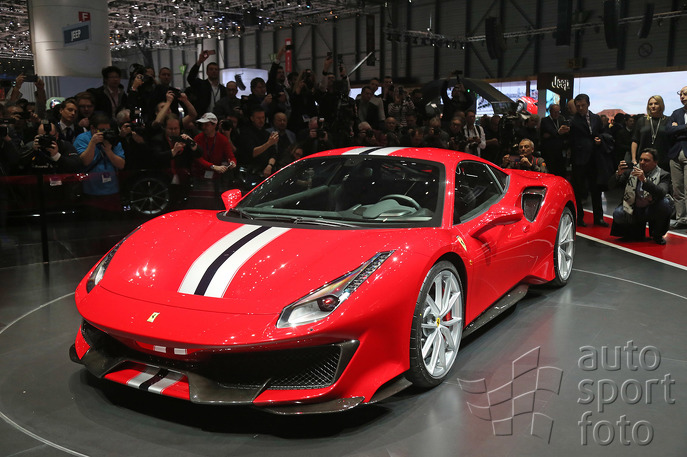
The car's aerodynamics are derived from both the 488 GTE and from Formula1, specifically the S-Duct at its front, the rear spoiler and diffuser profiles whichboost efficiency by 20% compared to the 488 GTB. Other solutions have beencarried over from the track to shave off further weight, including the lithiumbattery (from the 488 Challenge) and also the new carbon-fibre wheel rims - afirst for Ferrari. The overall result is that the 488 Pista is an impressive 90 kglighter than the 488 GTB.
As with the three previous special series, the Challenge Stradale, 430 Scuderiaand 458 Speciale, this new berlinetta is the perfect marriage of extremeperformance and track car-style handling.
The vehicle dynamics were designed for unique driving feedback and to makethe car's full potential available to all drivers, professional or otherwise. Specificvehicle controls were developed with this in mind, first and foremost being anew oversteer management system usable in the manettino's CT-OFF positionand designed to make the car's performance on the limit easier to reach andcontrol.
A new gear-shift strategy in the RACE position delivers a far more sportyexperience, very similar to that of a track car. In other words, the Ferrari 488Pista offers drivers of all abilities an exceptional and exhilarating experience thatnormally only a competition car could deliver, setting a whole new benchmarkin terms of driving pleasure for the Ferrari range.
The Ferrari 488 Pista's extreme design is underlined by the optional livery thathighlights the aerodynamic innovation of the S-Duct. The car's lines weredeveloped to underscore its sporty soul and cleverly combine the purity of the488 GTB with some of the hugely successful racing and functional elements ofthe 488 GTE and 488 Challenge while staying true to Ferrari's traditionalstyling.
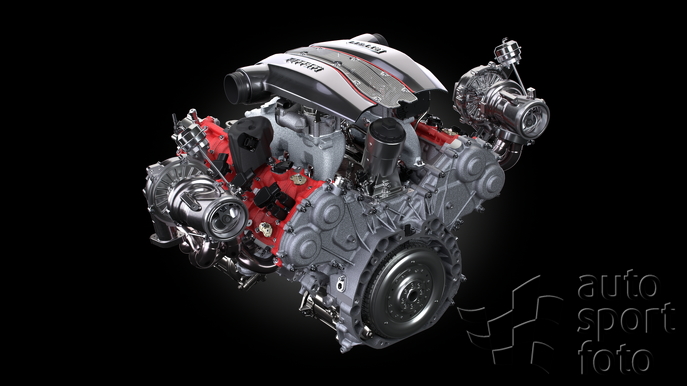
ENGINE
The Ferrari 488 Pista can punch out 720 cv at 8000 rpm, giving it the bestspecific power output in its class at 185 cv/l, while torque is higher at all enginespeeds, peaking at 770 Nm (10 Nm more than the 488 GTB). An extremeevolution of the turbo engine elected overall International Engine of the Year inboth 2016 and 2017, this is the most powerful V8 in Ferrari history.
The 50 cv power increase over the 488 GTB's engine is also the largest ever leapin engine power for a Ferrari special series car and a remarkable 115 cv morethan the previous model, the 458 Speciale. In short, this V8 is the newbenchmark not only for turbo-charged power units, but for all engines.
The development of this sportier version of the 488 GTB thus presentedFerrari's engineers with the highly complex challenge of improving on what wasalready acknowledged as the world's best engine. To do so, they had to test outa string of leading-edge solutions, drawing on Ferrari's successful experience inthe competition world. The result is that the Ferrari 488 Pista's engine has over50% of new components compared to that of the 488 GTB.
The Ferrari 488 Pista also fully exploits new features developed for the 488Challenge, not least the engine air intake layout with the intakes moved fromthe flanks to the rear spoiler area where they are connected directly to theplenums. This drastically reduces fluid-dynamic load losses and ensures a highervolume and cleaner flow of air to the engine, thereby contributing to theincrease in power.
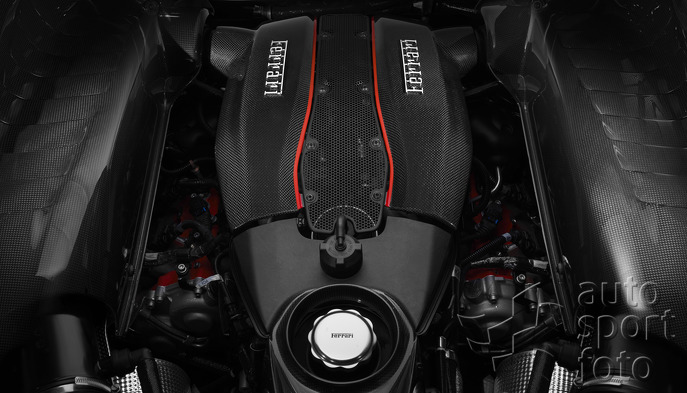
Moving the air intakes from the sides to the rear also freed up space for a largerintercooler. Thanks to a cooling layout derived from the 488 Challenge andfeaturing radiators with an inverted rake so that they are inclined towards therear, the hot air flow is channelled to below the flanks, well away from the sideintakes for the intercooler. This guarantees that power is maintained even incritical situations, such as in the wake of another car.
Specific valves and springs combined with a new cam profile give this engine amore aggressive, racing character. The pistons and cylinder heads have beenstrengthened to cope with the higher loads - up to an extra 10% of pressure inthe combustion chambers. Particular attention was also focused on reducinginternal friction by introducing, for example, DLC-coated piston pins.
The Ferrari 488 Pista's engine also benefits from all the lightweight componentsfeatured on the Challenge version, resulting in a weight reduction of 18 kgcompared to the 488 GTB. The exhaust manifolds are now made from Inconelwhile the crankshaft and flywheel are both lighter too. Titanium con-rods havealso been introduced and the reductions in the weight of the rotating massescut inertia by 17%. Drivers feel the impact of these reductions very clearly as thedriver can see the revs increasing much more rapidly.
The 488 Challenge also provides the turbos with integrated rev sensors.Response times are instantaneous and even faster than the 488 GTB thanks to anew control strategy developed specifically for this model. A new pedal mapalso makes driving on the limit even easier.
Lastly, the Ferrari 488 Pista's engine sound is unique and unmistakable, as sucha special version of the Ferrari V8 sports car warrants. The new Inconel exhaustmanifolds and an optimised exhaust bypass logic contribute to the superiorquality and the intensity. The level of sound is also higher than the 488 GTB inall gears and at all engine speeds, up to a maximum of 8 dB more, inproportion with the progressive increase in power.
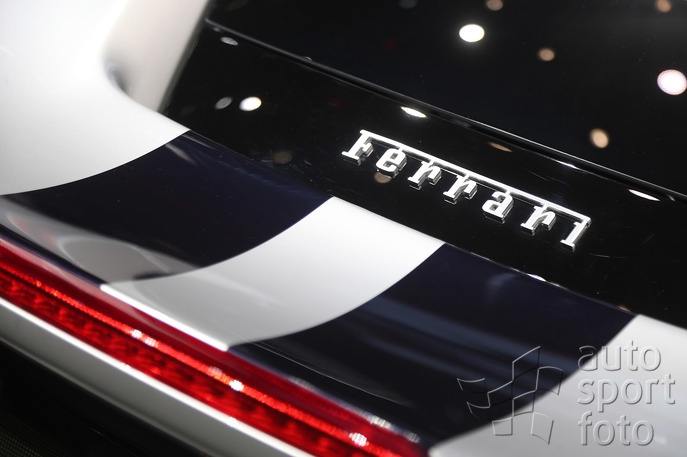
GEARBOX
The sporty driving feedback is further enhanced by the high-performance gearshifting, typical of a thoroughbred race car. The new gear shift strategy,available in the manettino's RACE position, reduces shifting times by 30 mswith positive acceleration when the higher gear engages that the driver can feeldistinctly.
This model also adopts the hugely successful Ferrari Variable TorqueManagement strategy for all gears. To adapt it to the car's extreme sporty spirit,all of the curves were redesigned to deliver a feeling of consistently smooth,powerful acceleration all the way to the red line.
VEHICLE DYNAMICS
The aim of the Ferrari 488 Pista's dynamic development was to produce a carthat offers blistering mechanical performance in terms of lap times andstanding starts, driving pleasure and accessibility of performance to drivers ofall types.
To achieve these objectives, Ferrari's engineers had to work on several fronts,starting with introducing numerous lightweight solutions as well as evolvingboth a new generation of the Side Slip Control System (SSC 6.0), improving theefficiency of the braking system and developing a new specific tyre, the MichelinSport Cup 2.
The Ferrari 488 Pista is 90 kg lighter than the 488 GTB, which brings hugeadvantages in terms of its agility and responsiveness. To maximise on this, theweight reductions are concentrated in the most weight-sensitive areas of thecar, such as the unsprung masses and components away from the car's centreof gravity.
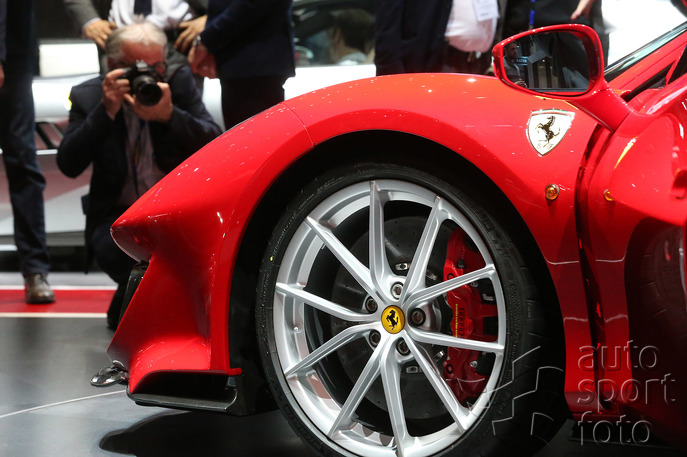
The body shell was designed to keep the car as light as possible and featuresultralight materials such as carbon-fibre for the bonnet, the front and rearbumpers and the rear spoiler, and Lexan for the rear window.
This is also the first time that a 20" (optional) single-piece carbon-fibre wheelrim has been used in the Ferrari range. Entirely in carbon-fibre, it is around 40%lighter than the 488 GTB's standard wheel rims and features a special coatingdeveloped for the aerospace industry to the channel and spokes whichefficiently dissipates heat generated under braking.
The evolution of the Ferrari 488 Pista's dynamic vehicle control systems saw theintroduction of a new actuation system that flanks those featured on the 488GTB and is integrated into the new version 6.0 of the SSC concept.
The 488 Pista also hails another first for a Ferrari road car - a lateral dynamicscontrol system that uses Ferrari software to adjust the brake pressure at thecallipers. The Ferrari Dynamic Enhancer (FDE) is available when the manettinois in the "CT-OFF" position. It regulates the lateral dynamics variables,including side slip angle estimation. The control system intervenes in advance,lightly actuating the callipers through, and exiting corners.
As a result the system manages the evolution of the side slip angle, makingcontrol of the lateral dynamics in high performance situations more intuitive,controllable and predictable. So it is not a stability control system, but amaximum performance-focused system.
The introduction of the Ferrari Dynamic Enhancer into the integrated SSC 6.0system thus gives drivers extra confidence so that they can more easily handleeven lengthy oversteer situations. It also makes performance on the limit easierto reach and control even for less expert drivers.
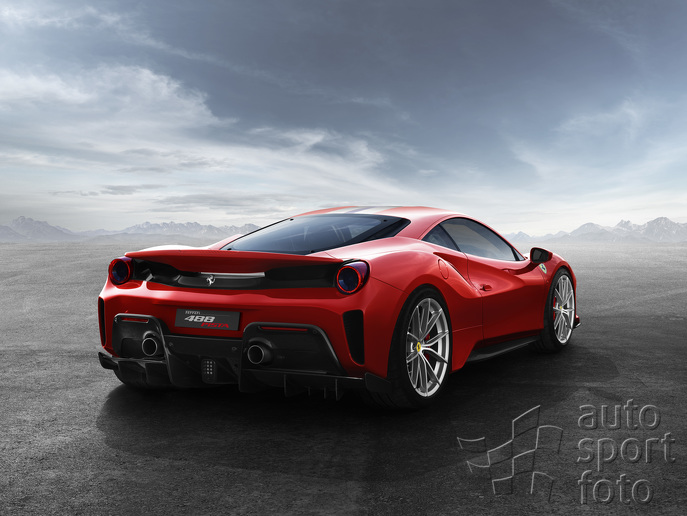
The Ferrari 488 Pista is extremely efficient in dealing with rapid changes ofdirection and offers drivers a unique sense of predictability. The recalibratedSCM-E dampers and the 10% stiffer springs contribute to this improvedhandling precision.
As the Ferrari 488 Pista was developed for mostly road use but also to unleashimpressive performance on the track, the braking system was modified toimprove cooling, particularly under extreme use, and also to cut the time ittakes to get up to temperature. The 488 Challenge's brake servo was adoptedto enhance the sporty pedal feel and deliver smooth, consistent braking even inextreme conditions.
These interventions, combined with the lightweight solutions adopted, haveshortened the 200-0 km/h stopping distance by a metre compared to the 488GTB.
AERODYNAMIC
SIn-depth aerodynamics research played a big part in improving the Ferrari 488Pista's performance. Working on a concept focused on uncompromisinginnovation allowed considerable engineering freedom in developing significantsolutions. The already-exceptional aerodynamic efficiency of the 488 GTB hasbeen improved by 20%, with major benefits in terms of absolute speed and laptimes on medium-fast tracks as well as sheer fun behind the wheel.
Essential to the development of the Ferrari 488 Pista's aerodynamics was thewealth of knowledge Ferrari has built up on previous and parallel projects wherethe aerodynamics department was able to test new and efficient solutions,integrating ideas developed for the 488 Challenge and the 488 GTE.
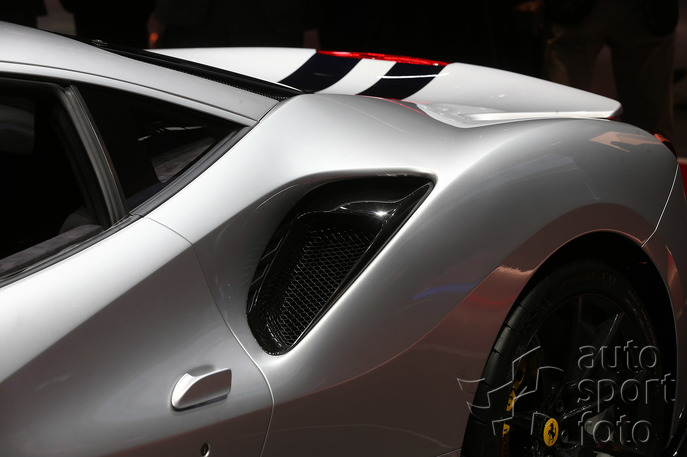
The 488 Pista's V8 turbo punches out 50 cv more than the car on which it isbased, thanks in part to a reduction of almost 15° C in the temperature of theair entering the plenum with respect to the 488 GTB. The development of thethermo-fluid dynamics consequently focused on the powertrain coolingspecifics, to minimise any impact on pure aerodynamic performance.
To guarantee the kind of performance demanded of the powertrain, theintercooler required an increase of over 25% in size compared to that of the 488GTB. In order to minimise the increase in weight and drag associated with sucha large radiating surface, the engineers worked intensively on the car as a wholeto improve efficiency, limiting the increase required in surface area to just 7%.The main contributing factors to the improved intercooler efficiency were theradical layout choices made at the front of the car.
The front radiator arrangement was completely redesigned to minimiseinterference caused by the thermal boundary layer, introduced by the hot airflow coming off the front radiators, with the air flow entering the intercoolerintake. As with 488 Challenge, the rake of the radiators has been inverted andthey are now inclined towards the rear to direct the hot air to the underbodyahead of the front wheels.
This choice produced, on the one hand, an improvement of 10% in theperformance of the rear intercoolers, and, on the other, an additionalaerodynamic benefit: the virtual fairing of the exposed area of the tyre cuts thecar's drag by 7%.
The engine air intakes have been moved from the flanks - the solution adoptedon the 488 GTB - to the rear spoiler as per the 488 Challenge. The specificshape of the spoiler delivers powerful recompression which guarantees theengine air intake benefits from high dynamic pressure, shortening the length ofthe inlet duct, reducing consequent losses and boosting engine performance.
The need for efficient downforce resulted in the whole of the front of the carbeing completely redesigned, particularly the bumpers and bonnet. Oneinnovative Formula 1-derived solution in particular stands out: the S-Duct,which is being used for the very first time on a road car. The air from the intakeon the front bumper passes through an aerodynamic duct with calibratedsections and exits through a vent on the bonnet, creating downward force overthe front axle.
Furthermore, the front intake is completed by a central lower wing profile that,on the one hand, acts as a splitter which, thanks to its curvature, accelerates theflow and increases the amount of air passing through the S-Duct, thusimproving its performance while, on the other hand, creating a low pressurearea under the front underbody thanks to the acceleration of the flow generatedon its lower surface, further boosting downforce.
This introduction of this particular solution accounts for 18% of the overallincrease in downforce compared to the 488 GTB, but barely a 2% increase indrag.The exterior sections of the bumper ahead of the wheels were also extensivelyredesigned with solutions modified from the 488 Challenge and reinterpretedso successfully that they are responsible for 23% of the increase in downforcecompared to the 488 GTB. Radical scoops in the front bumper allowaerodynamic elements to protrude in areas where they can be most efficient.The volume of the front bumper extends towards the wheelarch to deflect theflow ahead of the wheels outwards, generating suction from the wheelarch andthus from the front underbody, which is equipped with diffusers, all to thebenefit of front downforce.
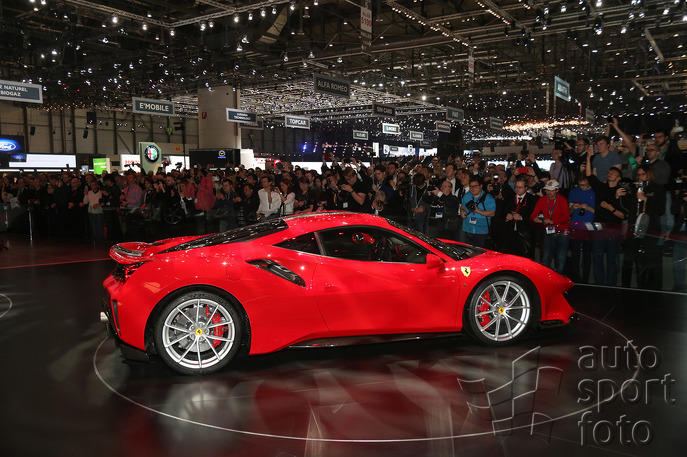
At the rear, two elements contributed to the achievement of the downforcetarget: the blown spoiler system and the venting behind the rear wheels.The spoiler is higher (+30 mm) and longer (+40 mm) compared to the spoileron the standard production car. Development work focused on the efficiency ofthe bleed under the spoiler to adapt it to the change in the car's overalldownforce. The calibrated sections have been optimised and the direction inwhich the air is blown has been modified: the angle is now upward, aided bythe deflection of the flow by the upper surfaces of the spoiler, to generate evenmore rear downforce. The evolution of the spoiler system and its bleed has hada significant impact on downforce, accounting for 25% of the overall increasecompared to the 488 GTB.
The increase in drag caused by the new blown spoiler system is compensatedfor by the shape of the air flows venting from the rear bumper below the taillights. Furthermore, the vents have been optimised to exploit the pressure fieldgenerated by the spoiler to encourage evacuation from the rear wheelarches,increasing intercooler efficiency by 3%, on the one hand, and incorporating thewake from the wheels on the other, allowing the diffuser to be struck by acleaner, more energised flow, boosting the rear downforce it generates.As is always the case with each new Ferrari, the 488 Pista's underbody has beenspecifically redesigned to ensure it delivers as efficient a Cl figure as possible.The first big difference compared to the 488 GTB is how the hot air from theradiators is deflected to the underbody ahead of the front wheels. This choice,made to enhance the cooling layout and lower the car's drag coefficient,however shrinks the surfaces that can be used to generate downforce. To makeup for this and further boost downforce, the designers decided to exploit otherareas of the underbody.
The Ferrari 488 Pista was thus equipped with front diffusers, made possible bythe change in the inclination of the front radiators and the elimination of thedams ahead of the wheels. Thanks to a ramp already optimised for the 488GTE, the diffusers accelerate the flow, venting it into the wheelarches, creatingstrong suction that in turn is responsible for 12% of the overall downforceincrease compared to the 488 GTB.The vortex generators on the underbody have also been optimised and nowgenerate 20% more downforce, thanks to modifications to their profile andlength.The rear diffuser is also derived directly from Ferrari's World EnduranceChampionship experience and has the same double kink line as the 488 GTE's,amplifying the extraction and downforce generation capacities of a traditionaldiffuser. As in the 488 GTB, the diffuser is equipped with a system of 3 activeflaps which rotate 14° in minimum drag configuration to completely stall thediffuser and thus significantly reduce the car's drag.
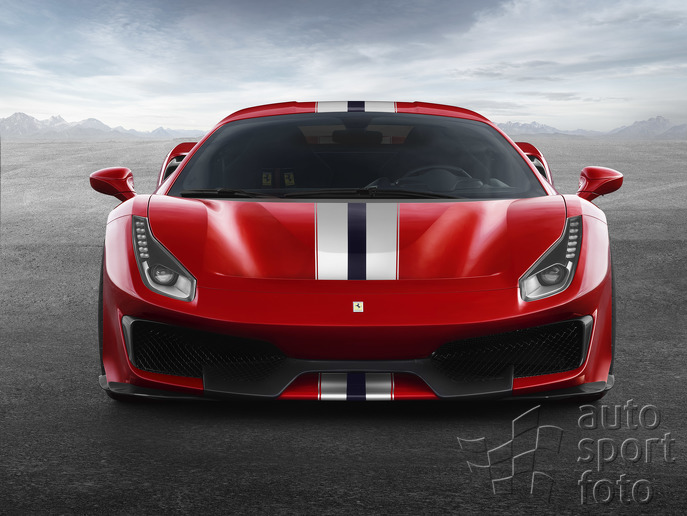
DESIGN EXTERIOR
Aerodynamic demands guided the work of the Ferrari Design Centre team. The488 Pista's forms have been meticulously sculpted to ensure they are moreperformance-oriented than ever, with huge attention lavished ensuring thatwhile aerodynamic demands were met, the Maranello marque's signaturestyling elements and aesthetic canons were respected.The designers used innovative elements, such as the aerodynamic S-Duct at thefront, as an opportunity to visually shorten the car's nose, creating an originalfloating wing effect. The black, omega-shaped edging on the front bumpers andthe side flicks reference the prominent aerodynamic underbody motif of the 488GTE.
Most notable on the flanks is the fact that the splitter in the side air intakes ofthe 488 GTB has been removed. At the front, the aerodynamic profiles thatstart at the front bumpers run sleekly along the side miniskirts all the way to theside appendages of the rear diffuser.The concept of the front is echoed in the dolphin-tail rear spoiler which appearssuspended to provide an impression lightness and efficiency, while the rearvolumes add a sense of power to the tail. The rear diffuser juts out and has beendeveloped in width: its design was inspired by that of the 488 GTE.The Ferrari 488 Pista features a two-tone livery that runs the entire length of thecar, starting at the front bumper, then diving into the S-Duct and continuing allthe way to the rear spoiler.
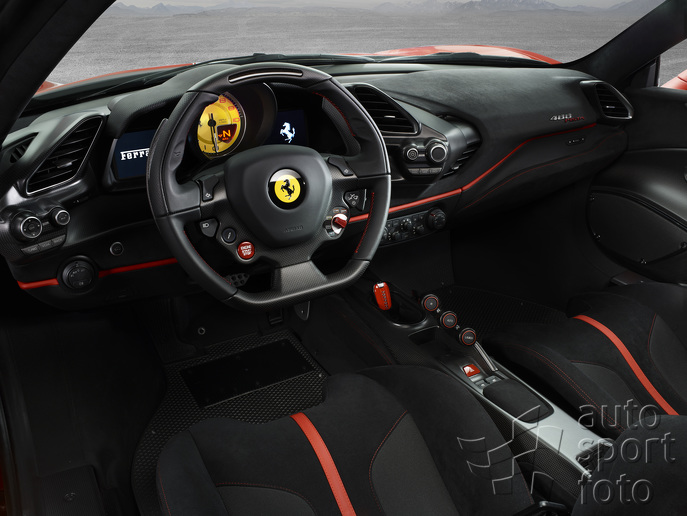
COCKPIT
The interior has a distinctive racing feel with all superfluous elementseliminated. The extensive use of lightweight, exclusive technical materials suchas carbon-fibre and Alcantara works brilliantly with the meticulous crafting andsophistication that is the signature of all Ferrari cockpits. Contrasting handstitching,tread plates and heel rests in triangular pattern aluminium andparticularly fluidly sculpted door panels are fine examples of this.The glove compartment (normally incorporated into the dashboard directly infront of the passenger) has been removed and replaced by handy storagepockets on the rear bench and the doors. The effect is to significantly visuallyslim down the volume of the under-dash area.
Diskusia k článku
Najnovšie galérie
































 Peter
Peter 
 Ján
Ján  Jean
Jean 
 Vladimír
Vladimír  Kristian
Kristian 